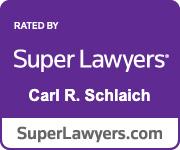How Does Maryland Classify Illegal Drugs into Schedules?

Any person who commits a drug crime in Maryland — such as possessing, or distributing illegal drugs — can face severe criminal punishment under state law. That being said, the specific punishment often changes based on the type of illegal drug in question. Under Maryland law, illegal drugs are referred to as controlled substances and classified according to their addictive potential and accepted medical use, if any.
When Does Maryland Add Controlled Substances to the Schedules?
Under Maryland Code of Criminal Law Section 5-202, there is a specific process in place for determining whether to add a controlled substance to a schedule. Before adding a substance to a schedule, the Maryland Department of Health must consider:
- Actual or relative potential for abuse or addiction of the substance;
- Scientific evidence of pharmacological effects of the substance, if known;
- Current state of scientific knowledge concerning the substance;
- History and current patterns of abuse of the substance;
- Scope, duration, and significance of abuse of the substance;
- Public health risks of the substance, if any;
- Ability of the substance to cause psychological or physiological dependence; and
- Precursor relationship to other controlled substances, if any.
On a related note, the Maryland classification of controlled substances mirrors U.S. federal law. As a result, if the U.S. federal government elects to list a controlled substance in any of its schedules, then it is likely that the Maryland Department of Health makes a similar classification.
Which Controlled Substances Appear in Schedule I?
Maryland Code of Criminal Law Section 5-402 details the controlled substances that appear in Schedule I. These controlled substances typically lack medical use and have a high potential for abuse. Schedule I controlled substances include:
- Heroin;
- LSD (Acid); and
- MDMA (Ecstasy).
Which Controlled Substances Appear in Schedule II?
Maryland Code of Criminal Law Section 5-403 establishes the controlled substances that appear in Schedule II. These controlled substances usually have severely limited medical use and a high potential for abuse. Schedule II controlled substances include:
- Cocaine;
- Opium;
- Vicodin; and
- Methamphetamine.
Which Controlled Substances Appear in Schedule III?
Maryland Code of Criminal Law Section 5-404 outlines the controlled substances that appear in Schedule III. These controlled substances ordinarily have limited medical use and a moderate potential for abuse. Schedule III controlled substances include:
- Ketamine;
- Anabolic Steroids; and
- Testosterone.
Which Controlled Substances Appear in Schedule IV?
Maryland Code of Criminal Law Section 5-405 describes the controlled substances that appear in Schedule IV. These controlled substances normally have an accepted medical use and lower potential for abuse, as compared to Schedule III. Schedule IV controlled substances include:
- Ambien;
- Xanax; and
- Valium.
Which Controlled Substances Appear in Schedule V?
Maryland Code of Criminal Law Section 5-406 illustrates the controlled substances that appear in Schedule V. These controlled substances normally have an accepted medical use and lower potential for abuse, as compared to Schedule IV. Schedule V controlled substances include:
- Lomotil;
- Lyrica;
- Motofen; and
- Parepectolin.
Do You Need Legal Help?
If you need legal help with drug crimes Maryland, it can be highly productive to speak with a skilled criminal defense attorney. The Bel Air drug crime attorneys at Schlaich & Thompson, Chartered have more than 60 years of combined legal experience in criminal and family law, including various drug crimes. If you need legal help, contact us today for an initial consultation.
https://www.stclaw.net/how-does-maryland-address-penalize-drug-distribution/























